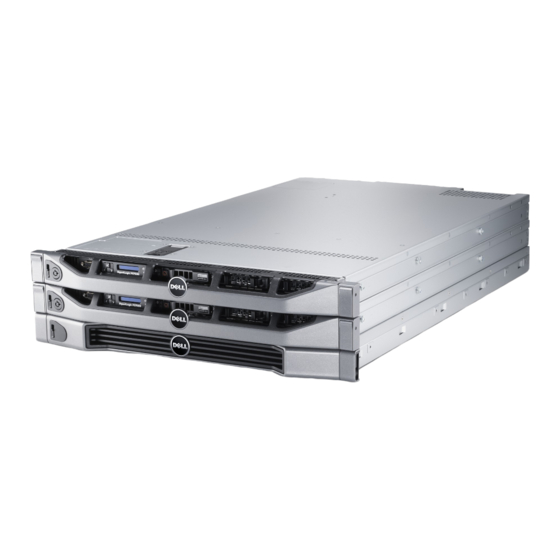Dell FS7500 Handbuch - Seite 5
Blättern Sie online oder laden Sie pdf Handbuch für Lagerung Dell FS7500 herunter. Dell FS7500 18 Seiten. Equallogic best practices series network attached storage
Auch für Dell FS7500: Übersicht (7 seiten), Technisches Handbuch (22 seiten), Hardware-Einrichtung (2 seiten)

Dell EqualLogic FS7500 – Unified block and file storage for virtual workloads
Sections
This white paper contains the following sections:
•
Storage Options for VMware
•
The Dell EqualLogic FS7500 storage solution for VMware
•
Storage Performance
•
Test Methodology
•
Test Results
Storage Options for VMware
The VMware® vSphere™ suite provides a hypervisor that supports full operating system virtualization
within a virtual machine (VM). A VM operates exactly like a physical server; it has its own virtual
hardware including processor(s), memory, hard disks, and network interfaces. Each VM runs its own
operating system, whether it is Windows™ ® or Linux, just like a physical server. Most major
applications and databases, for example Microsoft® Exchange®, Microsoft® SQL Server®, Microsoft®
SharePoint® and Oracle® 11g, are fully supported in VMware virtual environments. Application
performance is just as important in a virtual environment as it is in a physical environment. The
storage option you choose to host your virtualized application workloads is critically important for a
good end-user experience.
VMware offers a variety of storage options in the vSphere product suite to host virtual workloads.
These storage options are available to host both the VMware hypervisor including the VMs and the user
data for the application running within the virtual machine. These storage options include:
1. Direct Attached Storage (DAS): A typical DAS system consists of one or more data storage devices
directly connected to a computer through a host bus adapter (HBA). These devices can be housed
in the server enclosure or in an external enclosure that is directly connected to one or more
servers. A DAS environment does not have network devices like hubs, switches, or routers. DAS
connections primarily use ATA, SATA or SAS block-based protocols
typically leverage the VMFS file system.
2. Storage Area Network (SAN): A typical SAN consists of a dedicated network of storage devices that
serves one or more consolidated logical units (also known as LUNs) such that the LUNs appear as
locally attached storage devices to the server operating system. A SAN typically has a dedicated
switching fabric independent from the client local area network (LAN). A SAN provides only block-
level abstraction of storage devices. Shared file systems on a SAN use block-level operations to
access the host operating system, or user data. Examples include the Microsoft Windows NT file
system (NTFS) and the Linux third extended file system (ext3). SAN connections primarily use Fibre
Chanel (FC), FC over Ethernet (FCoE) or iSCSI block-based storage networking protocols. VMware
SAN environments typically leverage the VMFS file system.
3. Network Attached Storage (NAS): A typical NAS is a storage device that uses file-based protocols
such as NFS or SMB/CIFS and provides file-level abstraction of storage to the network clients.
Unlike SANs, NAS systems share the client LAN. Applications running on physical or virtual
environments that are connected to NAS devices use file level operations to provide access to user
data. VMware can host virtual workloads on NAS devices using the NFS protocol.
2
Although Fiber Channel protocol can be used in a DAS device, it is primarily used in a SAN device.
2
. VMware DAS environments
Page 3
